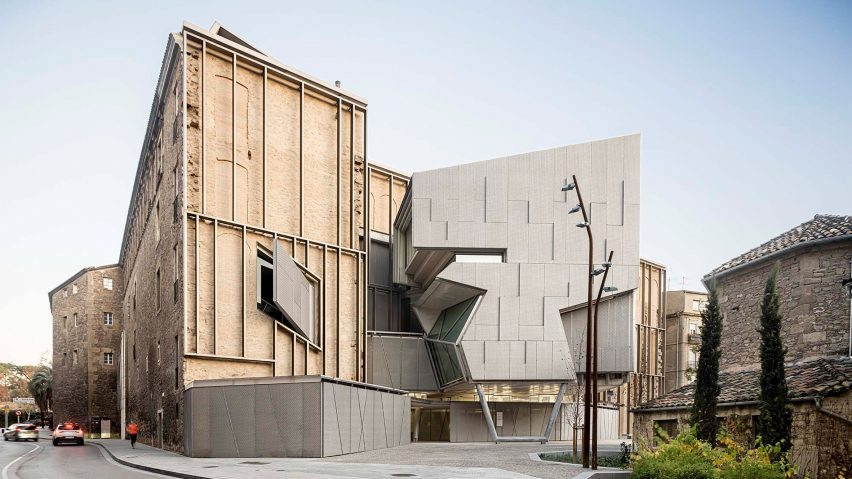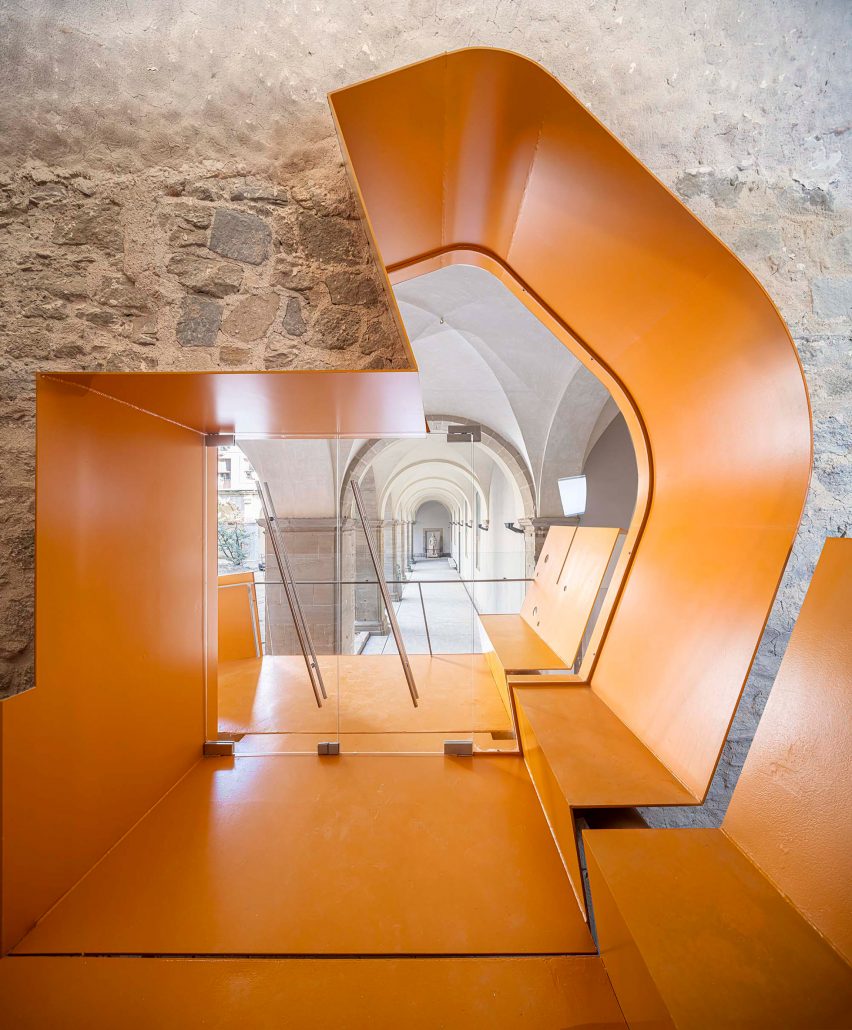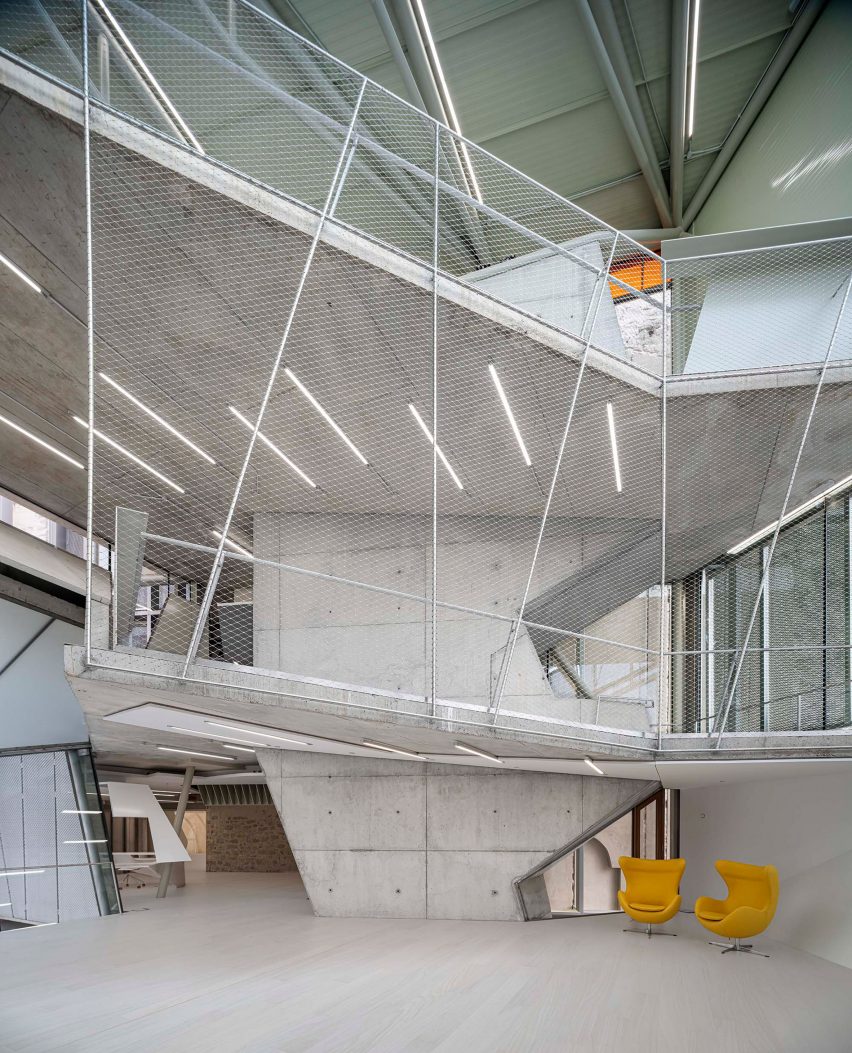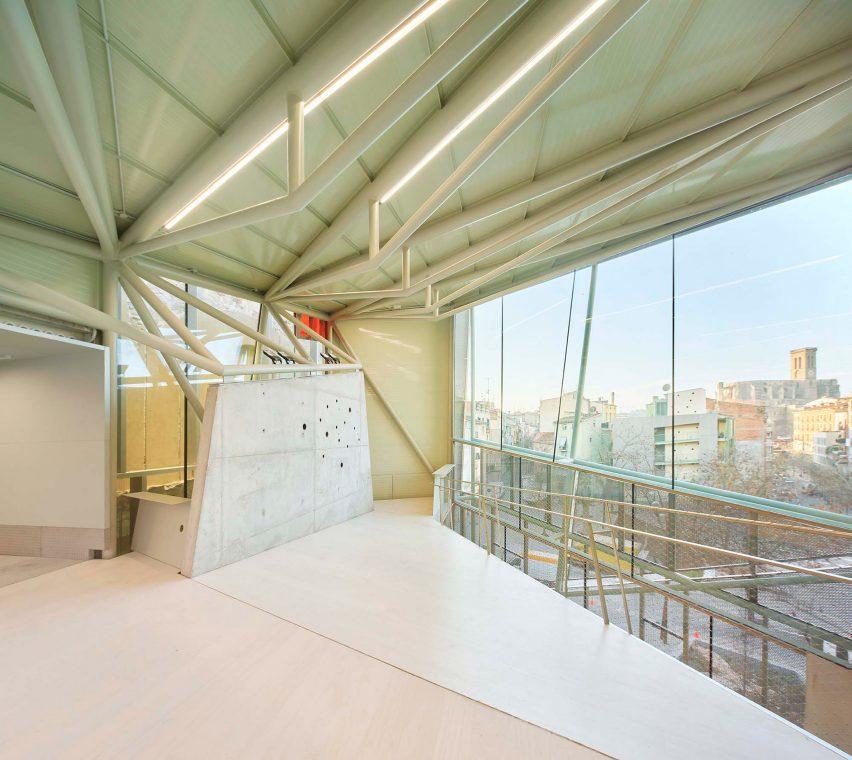
David Closes adds jagged metal entrance to museum in Catalonia
A jagged form clad in perforated aluminium marks the Baroque Museum of Catalonia entrance in Manresa, Spain, which has been updated by local architect David Closes.
The new pavilion is one of several interventions improving access to the museum, which occupies a former 17th-century Jesuit college building alongside Manresa's City History Museum.

Closes' design sits in the same position as an old baroque church that had been demolished on the site, intending to recreate its connection to the city.
In addition to an entrance pavilion, a series of routes have been created through the original Old Saint Ignatius College cloister, with walkways and ramps finished in bright orange metal.

"The project, in short, aims to 'remean' both the site of the intervention and the building itself by reestablishing links with the past of the Jesuit complex and with the city," explained Closes.
"The construction of the new accesses to the old Jesuit college is framed in the global renovation project of the entire built complex, which should grant to rationalise, refresh, and rethink the spaces of the preexisting museum," he added.

The entrance comprises a wide, low-lying volume that stretches across the site, and a three-storey angular volume above that is perched on large metal columns.
Its angular form is designed to frame views of both the old college and the surrounding city, with a mixture of full-height glazing and slim letterbox-style openings in the lobby spaces.
Perforated aluminium panels organised in an irregular grid shade the entrance pavilion from the sun but still allow fresh air to circulate when the windows behind are opened.
A partition wall that formerly separated the church from the cloister has been retained, overlaid with a metal grid that is intended to soften the transition between new and old while concealing drainpipes.

An angular window has been made in this existing wall to illuminate a staircase, shielded by a perforated aluminium screen that resembles a hinged opening.
"The new volumes, placed in front of the old partitioning wall of the church, are arranged in a way that allows the conformation of the new facade of the building but at the same time grant the sights to the most important footprints of the old church that remains on the partitioning wall," said Closes.

A ramp provides an accessible route from the entrance lobby to the cloister and courtyard and is finished in bright orange, a colour that was used by the Jesuit Order in their emblems, according to Closes.
The Baroque Museum of Catalonia entrance project shares many similarities with Closes' conversion of an 18th-century church into an auditorium, which involved the creation of a similarly angular entrance.
Other museum entrance renovations featured on Dezeen include a ribbed-glass pavilion at London's V&A by Sam Jacob and the wire-mesh entry area to M Woods in Beijing by Vector Architects.
The photography is by Adrià Goula unless otherwise stated.